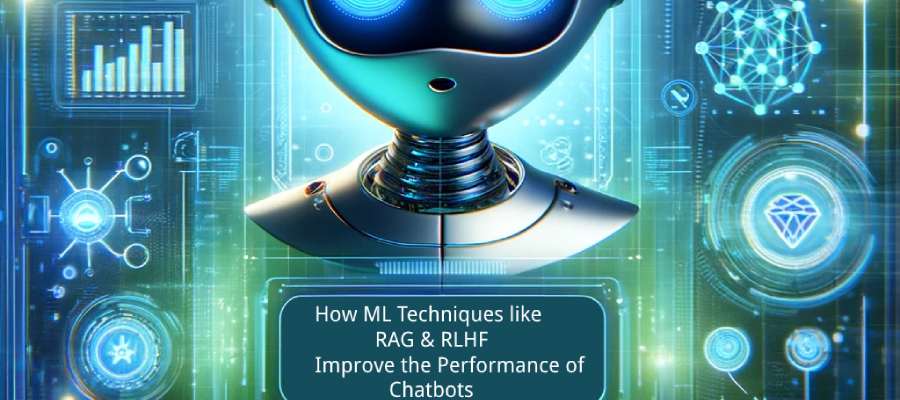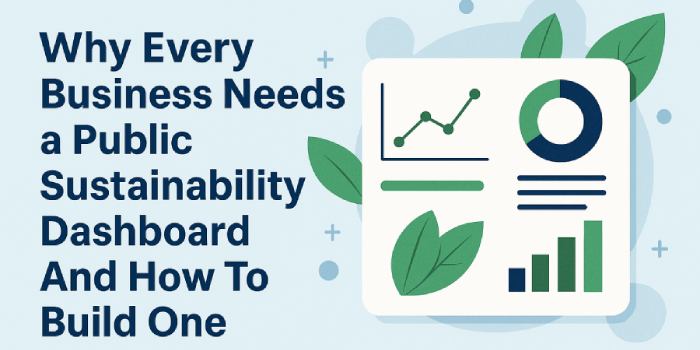How ML techniques like RAG and RLHF improve chatbot efficiency

In the rapidly evolving field of artificial intelligence (AI), chatbots have emerged as critical tools for businesses and individuals alike. As their applications expand, the need for more efficient and accurate chatbots becomes paramount.
Machine learning (ML) techniques such as Retrieval-Augmented Generation (RAG) and Reinforcement Learning with Human Feedback (RLHF) have shown significant promise in enhancing chatbot utilization of Large Language Models (LLMs).
We use RAG and RLHF for our project management chatbots at FolioProjects. Here we delve into how these advanced techniques have improved the efficiency of our chatbot, providing a detailed overview for ML savy readers.
Table of Contents
- Understanding Retrieval-Augmented Generation (RAG)
- Definition and Basics of RAG
- RAG Chatbot Performance Enhancements
- Exploring Reinforcement Learning with Human Feedback (RLHF)
- Fundamentals of RLHF
- The Role of Human Feedback in RLHF
- Synergy Between RAG and RLHF
- Combining RAG and RLHF for Optimal Efficiency
- Case Studies and Real-World Applications
- Technical Challenges and Solutions
- Overcoming Data Scarcity and Quality Issues
- Addressing Computational Complexity
- Future Prospects of RAG and RLHF in Chatbots
- Potential Developments and Innovations
- Ethical and Practical Considerations
- How ML techniques like RAG and RLHF improve chatbot efficiency
Understanding Retrieval-Augmented Generation (RAG)
With the growing context length on LLMs, the popularity of the RAG method has grown in popularity. The reality is that fine tuning existing models cannot perform as well as RAG, especially when considering rapidly changing information like seen with project management.
Definition and Basics of RAG
Retrieval-Augmented Generation (RAG) is an innovative ML approach that combines the strengths of retrieval-based and generative models. Traditional chatbots rely either on retrieval-based methods, which select the best response from a predefined set, or generative models, which create responses from scratch. RAG merges these techniques by retrieving relevant information from a vast database and then generating a contextually appropriate response.
In a typical RAG setup, a query is first processed by a retriever module, which searches a large corpus for pertinent data. This data is then passed to a generator module that crafts a response based on the retrieved information.
This dual approach leverages the accuracy of retrieval methods and the creativity of generative models, resulting in more coherent and informative responses.
RAG Chatbot Performance Enhancements
RAG's hybrid nature allows chatbots to provide more accurate and contextually relevant responses. By accessing a wide range of data, the retriever ensures that the chatbot has a broad knowledge base. The generator then tailors the response to the specific query, enhancing the relevance and coherence of the answer.
For instance, in customer support applications, a RAG chatbot can retrieve specific policy data and generate detailed responses tailored to the customer's query. This leads to a more efficient resolution of customer issues, reducing the need for human intervention and increasing customer satisfaction.
Exploring Reinforcement Learning with Human Feedback (RLHF)
At FolioProjects, we utilize RLHF to provide the LLMs like Llama 2, Mistral Large, and ChatGPT 4o with context from the user. This improves suggestions from the LLM.
Fundamentals of RLHF
Reinforcement Learning with Human Feedback (RLHF) is an advanced technique that integrates human judgment into the reinforcement learning process. Traditional reinforcement learning involves training an agent to maximize a reward signal through trial and error. RLHF enhances this process by incorporating human feedback to guide the agent towards more desirable behaviors.
In RLHF, human evaluators provide feedback on the agent's actions, which is used to adjust the reward function. This feedback loop helps the agent learn more effectively, as it can focus on actions that align with human preferences and values. The combination of automated learning and human insights leads to more sophisticated and reliable models.
RLHF can be seen in the following video where we get workflow, resource, and risk suggestions from LLMs. Based on our selections, the LLMs are able to learn context and make better suggestions
The Role of Human Feedback in RLHF
Human feedback is crucial in RLHF as it provides nuanced guidance that automated reward signals might miss. For example, in chatbot training, human evaluators can rate the quality of responses based on criteria such as relevance, clarity, and politeness. This feedback helps the chatbot learn not only to provide correct answers but also to communicate in a manner that users find satisfactory.
By continuously incorporating human feedback, RLHF enables chatbots to improve iteratively, adapting to changing user expectations and improving over time. This dynamic learning process results in chatbots that are more aligned with human conversational norms and better equipped to handle complex interactions.
Synergy Between RAG and RLHF
We utilize both RAG and RLHF on FolioProjects. Through trial and error, we have found this to be the best way to utilized pre-trained models with chatbots.
Combining RAG and RLHF for Optimal Efficiency
The integration of RAG and RLHF creates a powerful synergy that significantly enhances chatbot efficiency. While RAG ensures that the chatbot has access to a vast repository of information and can generate contextually rich responses, RLHF fine-tunes these responses based on human preferences.
This combined approach allows for continuous improvement. As the chatbot retrieves and generates responses, human feedback is used to refine its performance, leading to a more accurate and user-friendly system. The iterative feedback loop ensures that the chatbot remains relevant and effective, even as it encounters new and varied queries.
Case Studies and Real-World Applications
Several case studies demonstrate the effectiveness of combining RLHF and RAG in real-world applications. For instance, in healthcare, a chatbot using these techniques can provide personalized medical advice by retrieving relevant medical literature and refining its recommendations based on feedback from healthcare professionals.
Another example is in the legal field, where chatbots can assist with legal research by retrieving case law and statutes and generating summaries that are then reviewed and improved by legal experts. These applications highlight the potential of RAG and RLHF to transform various industries by providing more accurate and context-aware automated assistance.
Technical Challenges and Solutions
Efficient utilization of RLHF and RAG requires some planning and setup. To start, they both require data which needs to be prepared for the best results.
Overcoming Data Scarcity and Quality Issues
One of the primary challenges in implementing RAG and RLHF is ensuring the availability and quality of data. High-quality training data is essential for both retrieval and generative processes. Techniques such as data augmentation, transfer learning, and active learning can help mitigate data scarcity by generating additional training examples and leveraging pre-trained models.
Additionally, curating high-quality datasets with a robust ML data workflow and implementing rigorous data validation processes can enhance the reliability of the retrieved and generated responses. Collaborating with domain experts to annotate and review data can further improve the accuracy and relevance of the chatbot's responses.
Addressing Computational Complexity
The computational demands of RAG and RLHF can be substantial, given the need to process large datasets and perform complex calculations. Optimizing model architectures, using efficient training algorithms, and leveraging hardware accelerators like GPUs and TPUs can help manage these demands.
Furthermore, techniques such as model pruning, quantization, and knowledge distillation can reduce the computational load without sacrificing performance. Implementing scalable infrastructure and parallel processing can also enhance the efficiency of training and deploying these advanced ML models.
Future Prospects of RAG and RLHF in Chatbots
From testing, we are seeing that other methods like fine tuning do not provide the same results as RLHF and RAG. You should anticipate seeing these techniques utilized more for chatbots in the future.
Potential Developments and Innovations
The future of RAG and RLHF in chatbots holds exciting possibilities. Advances in natural language processing, such as transformer architectures and self-supervised learning, promise to further improve the accuracy and contextual understanding of chatbots. Integrating multimodal data, such as text, images, and speech, can also enhance the versatility and applicability of chatbots across different domains.
Innovations in human-computer interaction, including more intuitive feedback mechanisms and real-time learning, will enable chatbots to adapt more quickly and effectively to user needs. These developments will likely lead to more sophisticated and human-like conversational agents.
Ethical and Practical Considerations
As chatbots become more advanced, ethical and practical considerations must be addressed. Ensuring transparency in chatbot decision-making processes, safeguarding user privacy, and preventing biases in responses are critical issues. Developing robust ethical guidelines and implementing transparent, explainable AI frameworks will be essential in maintaining user trust and promoting responsible AI usage.
Practical considerations, such as user accessibility and ease of integration with existing systems, will also play a crucial role in the widespread adoption of advanced chatbots. Focusing on user-centric design and ensuring compatibility with various platforms and devices will enhance the usability and acceptance of chatbot technologies.
How ML techniques like RAG and RLHF improve chatbot efficiency
The integration of ML techniques like Retrieval-Augmented Generation (RAG) and Reinforcement Learning with Human Feedback (RLHF) significantly enhances chatbot utilization of LLMs.
By combining the strengths of LLMs with the nuanced guidance of human feedback, these techniques create more accurate, context-aware, and user-friendly chatbots.
As advancements in AI continue to unfold, the synergy between RAG and RLHF will drive the development of more sophisticated and effective conversational agents, transforming how we interact with technology and opening new possibilities for automation and assistance in various fields.

